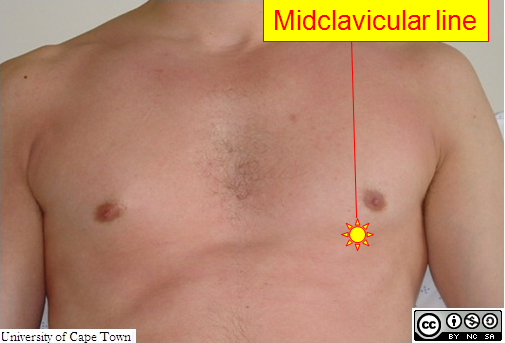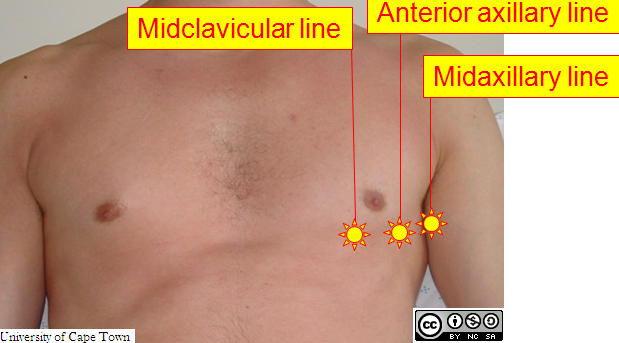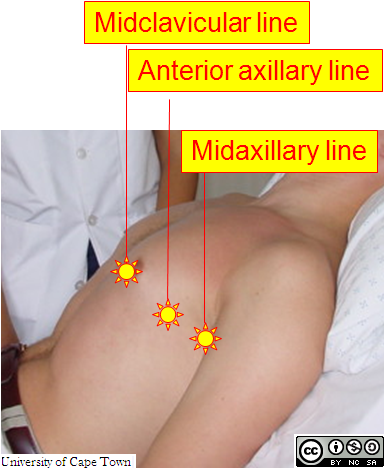Palpation of the apex
With each heartbeat, the heart tends to swivel round its vertical axis, throwing the tip or apex of the left ventricle against the left anterior chest wall. This gives rise to a palpable impulse known as the apex beat.
Identifying the apex beat gives useful clinical information.
Firstly, it allows some assessment of the size of the ventricle. In normal people, the apex beat is normally felt in the midclavicular line (usually in the 4th or 5th intercostal space, though the vertical position is not particularly important.

When the ventricle is dilated ? implying ventricular weakness or damage ? the apex is laterally displaced, and may be felt beyond the midclavicular line, in the anterior axillary line. Or even in the midaxillary line.

Thus the further out the apex is felt, the more dilated the heart. (Occasionally displacement of the whole mediastinum, for instance by a pneumothorax, can also displace the apex.)

Secondly, the pattern and the vigour of left ventricular contraction can be gauged by careful study of the apex beat. This is described further in your textbooks.
Practice is required in order to learn to recognise the normal apex, the slow-rise-and-fall (pressure-overloaded) apex and the rapid-rise-and-fall (volume-overloaded apex), and the weak, diffuse apex of cardiomyopathy.
The technique is to place the flat of the hand over the left chest wall and attempt to recognise the apex beat. One can then use the finger tips to narrow down its precise position, which is then recorded. In women, one must feel right up underneath the left breast.
| AFRIKAANS | TRANSCRIPT | XHOSA |
|---|---|---|
| I?m not finished yet. / Ek is nog nie klaar nie. / Andikagqibi. | ||
| I need to feel your heart here please. / Ek moet hier voel vir u hartklop, asseblief. / Ndicela ukuva intliziyo yakho apha (kule ndawo) | ||
| I?m going to keep my hand here. / Ek gaan my hand hier hou. / Ndiza kubeka isandla sam apha. |
It is often difficult or even impossible to feel the apex, particularly in the obese patient. In such cases it can be helpful to turn the patient onto his left side, which will throw the ventricle against the chest wall. In this position, one cannot comment on the position of the apex (which has now been distorted), but one can comment on the character.
| AFRIKAANS | TRANSCRIPT | XHOSA |
|---|---|---|
| Please turn onto your left side. / L?op u linkersy, asseblief. / Khawujonge ngasekunene. | ||
| Thank you, that?s fine./ Dankie, dit is reg so. / Heke! Enkosi. | ||
| Now turn back again. / Draai nou terug, asseblief. / Ngoku jika kwakhona. |
